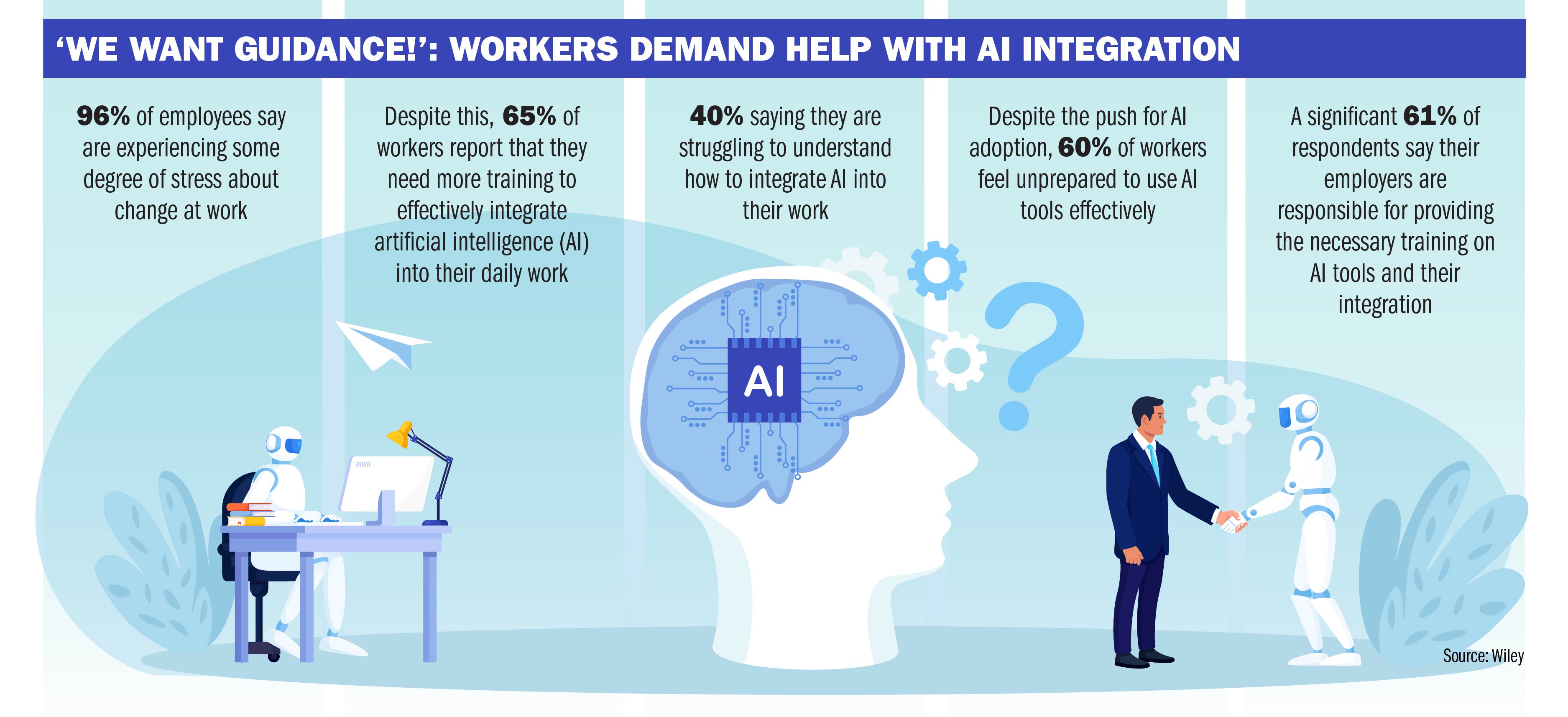
Wiley CPO Danielle McMahan discusses importance of putting people first in tech rollouts

With AI continually gaining traction in the HR sphere, the question for practitioners and their organizations is how to prioritize ethical and responsible adoption of the new tech without compromising its speed and efficiency?
Research from global publishing giant Wiley found that managers and employees are struggling to understand how and when to integrate AI into their work – demanding training and a better understanding of organizational expectations and strategy.
Speaking to HRD, Danielle McMahan, chief people and business operations officer at Wiley, explained that her team has developed core values and strategies to ensure they never cross that ethical line in the sand.
“AI isn't just another tech tool—it's a powerful one that needs to be used thoughtfully.”
Wiley’s recent Workplace Intelligence survey showed that 96% of workers are stressed about AI-driven changes, she says.
“That really drove home the importance of putting people first in our AI adoption. We've found that when people understand the ‘what’ and the ‘why’ behind changes, they're much more likely to get on board.”
Wiley has developed a set of core AI principles focused on human oversight, trustworthiness, safety, and accountability, says McMahan.
“These principles have helped guide us in building and evolving a work environment where everyone feels empowered to use AI confidently and responsibly.”

But what are we talking about when we talk about ethical responsibilities? It’s not just a case of declaring that you’re using AI, it’s about understanding how, when and why you’re using it – and, more importantly, when it shouldn’t be used at all.
The debate around transparency in AI use has also heated up in Ontario, with Parliament working towards passing the Artificial Intelligence and Data Act (AIDA), which would require all employers who use AI systems deployed in Canada the ensure they’re “safe and non-discriminatory and would hold businesses accountable for how they develop and use these technologies.”
“The big challenge today is keeping up with how fast the AI landscape is changing,” added McMahan, citing research showing that 76% of workers surveyed aren’t confident about using AI at work.
“To bridge this gap, it is quite important to set clear expectations and create frameworks for AI use, enabling colleagues to enhance their efficiency and productivity. The key to success lies in building a workplace where this new technology helps save time and drives strong outcomes. It should also be used to strengthen human connection and not replace it.”
To achieve this, Wiley assembles a diverse group of internal subject matter experts from business, technology, legal, and communications sectors to drive strategy and oversee implementation. It’s this collaborative approach, McMahan told HRD, that ensures that AI tools are developed and utilized effectively across the organization.
So much so that this commitment is reflected in the publishing giant’s impressive usage rate of more than 90% among employees who have been issued an enterprise AI license.
“We understand that success in AI adoption isn't just about the technology – it's about the people using it. We've found that focusing on individual growth while sticking to our guiding principles makes sure our AI tools work well for everyone.”
Engaging employees and stakeholders in discussions about ethical AI use is another cornerstone of Wiley's strategy, with McMahan highlighting the creation of multiple opportunities for colleagues to discuss AI and share best practices.
“For example, we've established internal communities where colleagues exchange notes and insights on how they are using AI in their day-to-day work. These communities have become valuable channels for discussing best practices. Clear expectations and understanding of organizational strategy are crucial for comfortable AI adoption.
“We've responded by making AI adoption an explicit enterprise goal, cascaded throughout the organization.”
And, for other organizations looking to emulate Wiley’s AI success here, McMahan has one gold piece of advice; put people first.
“We've learned that balancing innovation with human touch is key. Our research shows 80% of employees see human skills as essential in a tech-heavy world, so leaders should design workplaces where technology complements human interaction, fostering collaboration and connection.
And employers should start by setting expectations for using AI, she says.
“At Wiley, we’ve found that rolling initiatives gradually, alongside solid training, helps people feel empowered, not overwhelmed. This isn’t just about keeping up with trends—it’s about making work easier with tools that help people grow, personally and professionally.
“Above all, be open about the whole process. When people understand the broader vision, they're much more likely to get involved. The future of work isn’t about choosing between people and tech—it’s about using AI thoughtfully to help everyone succeed at work and in life.”